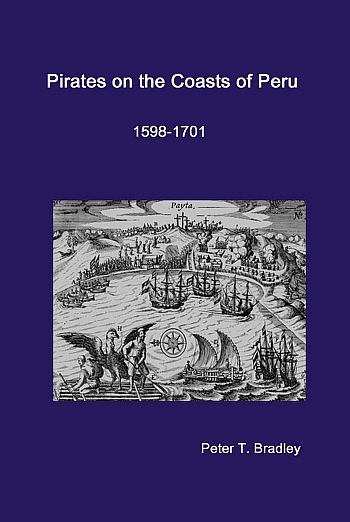|
In the eyes of the Spanish crown,
all of those who intruded into the seas around its empire in Central and South
America were pirates - piratas, corsarios, bucaneros or
sometimes pechelingues. At the heart of their actions, of course, lay
many decades of bitter animosity towards Spain deriving from opposition to her
catholicism and her political pretensions in Europe. These clearly reached
climaxes in the defeat of the 'Spanish Armada' sent against England in 1588,
and the struggles in the Low Countries from 1568 to 1648 to achieve
independence from religious and political subjection to Spain. Earlier in the
sixteenth century, however, this rivalry had already spread across the Alantic
to the New World, when Spain's European enemies became aware of the vast riches
that Spain had already begun to acquire from newly conquered lands there.
First, the arrival of Aztec treasure from Mexico and then, precious items of
Inca craftsmanship from Peru, had a wondrous impact throughout Europe. This was
confirmed and intensified by the alluring legend of the golden kingdom of El
Dorado, and from 1545 by the spectacular output of silver from the greatest
mine in the New World at Potosí in the viceroyalty of Peru, which was
transported by sea to Panama for onward shipment to Spain. This study reveals
the individual motives and traces the actions mainly of Dutch, English and
French seamen along the west coast of South America, especially between the
Straits of Magellan and the Isthmus of Panama. At first they arrived directly
from Europe, but later as buccaneers they left their old haunts in the
Caribbean and expanded their operations to the South Sea, either after crossing
the Isthmus of Panama, or crossing the Atlantic from North America to Africa,
and from there heading for the Straits of Magellan. It also sketches out their
physical impact on the lives and livelihoods of residents there, and the ways
in which they contrived to protect themselves both by fortifications on land
and by armed flotillas at sea. This topic is treated comprehensively in
Spain and the
Defence of Peru, 1579-1700: Royal Reluctance and Colonial Self-Reliance
(2009).
The first interlopers to arrive,
of course, in the latter decades of the sixteenth century were Francis Drake
and Thomas Cavendish on their respective voyages of circumnavigation, 1577-80
and 1586-88, followed by Richard Hawkins, 1593-94. Their exploits have been
widely studied in the past, and more recently in
British Maritime Enterprise in the New World: From the Late Fifteenth to the
Mid-Eighteenth Century (1999) with an extensive bibliography, and
Navegantes
británicos (1992). The present volume, therefore, opens with
Dutch intervention into the South Sea that would last almost to the middle of
the seventeenth century. Collectively throughout the century, foreign intruders
range from some of the most ferocious, heartless and brutal men of their age,
murdering and taking hostages like twenty-first century terrorists, and pirates
in the Indian Ocean, to others keen to expand their commercial horizons and
open new and profitable markets for European trade goods. Apart from the
vestiges of local efforts to defend the coastline, for example in Lima and
Valdivia, they did not create a permanent presence like their counterparts on
Caribbean islands. However, they did discover, describe, publicize, map and
ultimately establish the viability of the long, perilous oceanic routes to Peru
and in the South Sea, contributed to English settlement on the Falkland Isles,
and laid the foundations of the great eighteenth-century era of trans-Pacific
exploration and discovery. Accounts of their adventures and their deeds were
also to contribute to the emergence of a new genre of travel literature, most
famously the tale of Robinson Crusoe. |


